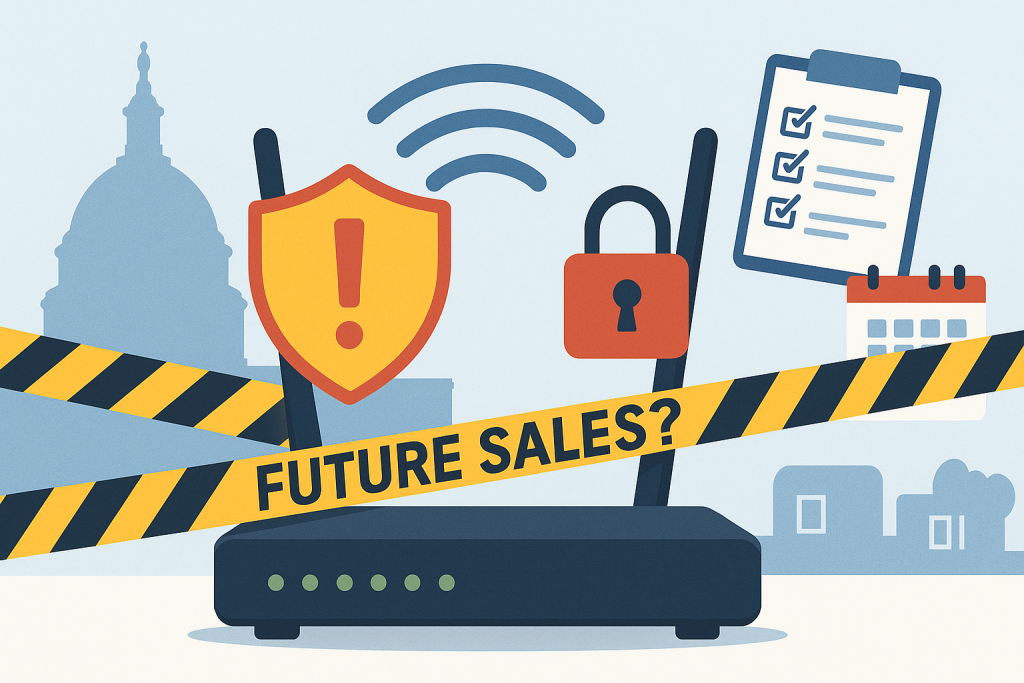
Table of Contents
Over the past few days, several U.S. federal agencies have reportedly signaled support for a Commerce Department proposal that could restrict future sales of TP-Link routers in the United States, citing national-security and supply-chain risk concerns. This is not a finalized ban. Instead, it’s an early regulatory step that may lead to formal notice, a company response period, and further review before any rule would take effect. For homeowners and businesses alike, the headline raises a practical question: What should you do right now?
This post explains the status, clarifies what it means for existing devices, and shares concrete steps you can take today to reduce risk and improve resilience—no matter which brand you use.
What’s happening (and what isn’t)
- The proposal, in plain English: The Commerce Department is studying a rule that would block new U.S. sales of certain TP-Link products. Interagency backing indicates the proposal cleared an early hurdle, but it’s still part of a process—not an outcome.
- Next steps if the process continues: Commerce would issue a formal notice to the company, allow time for a response, and then evaluate before deciding whether to finalize any restriction. That means timelines could stretch and details may change.
- No instant impact for current owners: There’s no mandate to unplug, discard, or disable devices already in use. The conversation is focused on future sales, not retroactive shutdowns.
Should current TP-Link owners rip and replace?
Short answer: No. If your equipment is meeting your needs and receiving timely security updates, you don’t need to panic. That said, two realities still matter:
- Aging hardware loses security posture over time. Wi-Fi standards evolve (WPA3, improved ciphers), vulnerability research advances, and older models eventually fall off a vendor’s update train.
- Network hygiene often matters more than brand. Poor defaults (weak passwords, exposed admin interfaces, UPnP everywhere) can turn any router into a soft target.
As a general rule, if your router is four to five years old or more, you should begin planning a refresh—regardless of vendor—because the security and performance deltas add up.
A practical checklist to harden any router now
These steps apply equally to home users, SMBs, fleets, and distributed enterprises:
- Update firmware immediately
Log into the admin interface and install the latest stable release. If your platform supports it, enable automatic updates so critical patches land without delay. - Lock down management access
- Change default admin usernames and passwords.
- Disable remote administration from the WAN unless a business case requires it. If you must keep it on, protect it behind a VPN, use allow-listed IPs, and enforce MFA via your SSO/VPN gateway.
- Use HTTPS (not HTTP) for local management and verify certificate warnings.
- Use modern Wi-Fi security
Prefer WPA3 (or at minimum WPA2-AES). Retire WEP and WPA-TKIP, which are obsolete and vulnerable. - Segment your network
Place IoT, guest, and untrusted devices on a separate SSID/VLAN with client isolation. Restrict lateral movement so a compromised camera or thermostat can’t reach your laptops, servers, or POS systems. - Turn off risky extras
UPnP and WPS are convenient—but they expand attack surface. Disable them unless you have a clear, validated need. - Monitor and log
Enable logging and export to a syslog server or SIEM where possible. For multi-site fleets, use centralized management to view health status, push updates, and audit changes across locations. - Adopt a lifecycle policy
Set expectations to refresh routers every 4–5 years, sooner if a vendor stops shipping security updates. Budgeting for lifecycle management turns surprises into scheduled maintenance.
Planning a purchase in the next 30–90 days?
If you’re mid-cycle on a network upgrade, don’t stall your entire plan—tighten your evaluation criteria instead:
- Security transparency: Favor vendors with clear advisories, published CVE response practices, and defined software support lifecycles. Ask for the expected end-of-support date for your exact model.
- Update cadence and SBOMs: Look for predictable release trains and vendor-supplied Software Bills of Materials to improve vulnerability tracking.
- Operational fit: Consider requirements like dual WAN or cellular failover, zero-touch provisioning, policy-based routing, VPN topologies, user-level access control, and API hooks for automation.
- Management at scale: If you operate fleets (branch, vehicle, IoT), prioritize robust cloud management that can push policies, run site surveys, collect telemetry, and roll back safely.
What could change—and how to stay ready
Regulatory processes can evolve with new facts and public comments. If Commerce advances to formal notice, there will be a defined response window before any final action. Even if a restriction is ultimately adopted, the focus remains on future sales rather than retroactively disabling gear you already own.
From an operator’s perspective, the best posture is brand-agnostic resilience: keep firmware current, reduce attack surface, isolate risk, centralize visibility, and maintain a budgeted refresh cycle. These fundamentals lower risk today and cushion you from vendor-specific policy changes tomorrow.
Where 5Gstore can help
If this news prompts a broader security or refresh discussion, we can help you evaluate options across multiple vendors, including enterprise-grade features like cellular failover, SD-WAN, VPN overlays, and centralized fleet management. We can also advise on hardening checklists, lifecycle planning, and migration paths that minimize downtime while improving security outcomes. Feel free to contact 5Gstore, if you need help replacing a TP-Link or just want to talk and geek out.

